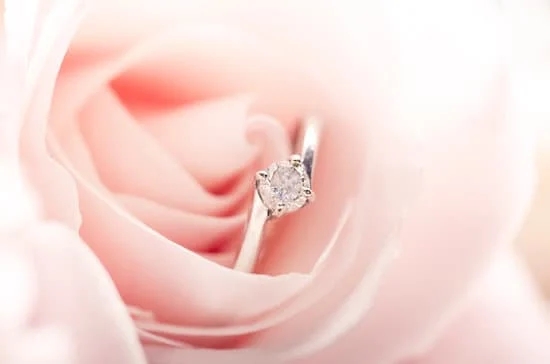Jewelry making is a delicate art that requires attention to detail and precision. One of the essential techniques in this craft is crimping, which involves securing beads onto beading wire. Crimping not only ensures that the beads stay in place but also adds a professional touch to the finished piece. Whether you’re a beginner or an experienced jewelry maker, learning how to properly crimp a bead is crucial for creating beautiful and secure jewelry.
Crimping involves using crimp beads, which are small metal tubes specifically designed for this purpose. These beads are flattened using crimping pliers, ensuring that they secure the beading wire firmly without damaging it. Properly crimped beads offer a neat and clean finish, giving your jewelry pieces a polished appearance.
Why is crimping important in jewelry making? Well, aside from keeping your beads in place, it also provides structural support to the overall design of your piece. This technique ensures that your creations withstand daily wear and tear, preventing any accidental breakage or damage. Additionally, well-crimped beads enhance the longevity of your jewelry by preventing strands from unraveling over time.
In this article, we will explore everything you need to know about crimping beads in jewelry making. From the tools and materials needed to choosing the right type of crimp bead for your project, we’ll guide you through each step of the process. So let’s dive in and discover how to master the art of crimping to create stunning and durable pieces of jewelry.
Tools and materials needed
To successfully crimp a bead in jewelry making, you will need a set of specific tools and materials. Here is a detailed list of everything you will need:
- Crimp beads: These small metal beads are specifically designed for securing the ends of beading wire. They come in different sizes and materials, such as sterling silver or gold-filled, to match the overall design of your jewelry piece.
- Crimping pliers: These specialized pliers have two notches on one side for creating the initial fold in the crimp bead and another notch on the other side for tightly squeezing it closed. Crimping pliers ensure a neat and secure finish.
- Wire cutters: You will need a pair of wire cutters to trim excess wire after crimping. Choose wire cutters that have a sharp cutting edge to make clean cuts without damaging the wire or leaving any sharp edges.
- Beading wire: This flexible wire is what you will string your beads onto. It comes in various materials like nylon-coated stainless steel or tiger tail wire, which is recommended for its durability and flexibility. Be sure to choose the appropriate thickness (gauge) of beading wire based on your project’s weight and desired level of sturdiness.
It’s important to gather all these tools and materials before starting your crimping project to ensure a smooth workflow and prevent interruptions mid-process. Once you have everything ready, you can move on to selecting the right crimp bead based on your needs and preferences.
Choosing the right crimp bead
When it comes to crimping beads in jewelry making, choosing the right crimp bead is crucial for ensuring a secure and professional finish. The crimp bead not only holds the beading wire in place but also adds an aesthetic element to the overall design. Here are some tips on selecting the appropriate crimp bead based on the wire size and type of jewelry being made.
Firstly, consider the wire size you are working with. Different wire sizes require different sizes of crimp beads. It is essential to match the diameter of the crimp bead with the diameter of your beading wire. Using a crimp bead that is too large or too small can result in an insecure hold or damage to the wire. As a general rule, choose a crimp bead that has an inner diameter slightly larger than your beading wire.
Secondly, think about what type of jewelry you are creating. The type of jewelry can influence the choice of crimp bead as well.
For instance, if you are making a delicate necklace or bracelet, using smaller and more lightweight crimp beads would be ideal to maintain the daintiness of the piece. On the other hand, if you are designing a chunky statement necklace or a heavy-duty bracelet, opt for larger and sturdier crimp beads that can handle the weight and provide a stronger hold.
Furthermore, consider using specialized crimps for certain types of jewelry projects. There are different types available such as tube-shaped or twisted crimps that offer unique designs and functionalities. Tube-shaped crimps can give a seamless look by creating an illusion of a continuous piece while twisted ones add texture and interest to your design. These specialized options can elevate your jewelry piece and add an extra flair to your designs.
Preparing the beading wire
Before crimping a bead in jewelry making, it is essential to properly prepare the beading wire. This step ensures a clean and secure finish, ultimately enhancing the overall quality of the jewelry piece. To achieve this, follow these simple steps:
- Measure and cut the beading wire: Start by measuring how much beading wire is needed for your design. It is advisable to add a few extra inches as allowance for any adjustments or mistakes. Use a pair of wire cutters to carefully cut the desired length of beading wire.
- Straighten the beading wire: Beading wires often come in rolls or coils, which may have kinks or bends from storage. To straighten the wire, gently grasp one end and run your fingers along its length while applying moderate pressure. This action helps remove any twists or bends in the wire, resulting in a smoother appearance.
- Optional: Use nylon jaw pliers for further straightening: If necessary, you can use nylon jaw pliers to ensure complete straightening of the beading wire. Simply grip the end of the wire with the pliers and gently pull it through until reaching the other end. Repeat this process a few times if needed.
By following these preparation steps, you can ensure that your beading wire is ready for crimping. Straightening eliminates any potential kinks or twists that might affect how well the crimp bead holds onto the wire. A smooth and tangle-free beading wire allows for easier manipulation during crimping, creating a neater and more professional-looking finish.
It is important to note that different types of wires may require specific preparation techniques based on their material and thickness. For example, memory wires should not be straightened but instead shaped according to their intended design.
Taking time to properly prepare your beading wire before crimping will help you achieve a clean and secure finish, resulting in beautiful and long-lasting jewelry pieces.
Proper crimping technique
To crimp a bead properly in jewelry making, it is important to follow a step-by-step guide that includes proper alignment, positioning, and pressure for a secure crimp. This technique ensures that the bead is securely attached to the beading wire, providing durability and longevity to your jewelry piece.
- Start by selecting a crimp bead that matches the size of your beading wire. Once you have chosen the appropriate crimp bead, thread it onto the beading wire.
- Using your fingers or flat nose pliers, flatten the crimp bead gently to create a small fold. This will prevent the bead from sliding off the end of the wire during the crimping process.
- Position the folded crimp bead about 1-2 inches away from the end of the beading wire. Hold it firmly between your thumb and forefinger.
- Take your crimping pliers and position them horizontally over the folded crimp bead. The larger opening should be at the bottom while the smaller opening should be at the top.
- Gently squeeze down on the pliers to press both sides of the crimp bead evenly. This will create two indents or “U” shapes in the bead.
- Rotate your pliers 90 degrees so that they are now positioned vertically over the indented crimp bead.
- Apply enough pressure with your pliers to close both sides of the crimp bead together, ensuring a secure hold on the wire.
- Check if both sides of the crimp bead are securely closed by giving it a gentle tug with your fingers. It should not move or slide along the beading wire if properly crimped.
By following this step-by-step guide and mastering proper alignment, positioning, and pressure when using crimping pliers, you can achieve a secure and professional-looking finish for your jewelry pieces.
Troubleshooting common issues
Crimping beads in jewelry making can sometimes be challenging, as there are common issues that may arise during the process. Two of the most common problems encountered while crimping beads are loose crimps and damaging the wire. However, with the right techniques and knowledge, these issues can be easily resolved or even avoided altogether.
One common problem that jewelry makers may face is ending up with loose crimps after completing the crimping process. Loose crimps can result in an insecure connection between the beading wire and clasp, which can lead to your jewelry piece falling apart. To prevent loose crimps, it is important to use the appropriate size of crimp bead for your wire.
Using a bead that is too large will not create a tight grip on the wire, resulting in a loose connection. Additionally, make sure to apply sufficient pressure when using your crimping pliers to ensure a secure hold.
Another issue that can occur while crimping beads is damaging the wire. This can happen if too much pressure is applied or if incorrect positioning of the pliers occurs during the crimping process. Damaged wires can weaken the overall structure of your jewelry piece and compromise its durability.
To avoid damaging the wire, take care to position your pliers correctly over the crimp bead and avoid excessive force when squeezing. It is also crucial to use quality tools that have smooth jaws to minimize any potential damage.
In summary, troubleshooting common issues encountered while crimping beads involves addressing loose crimps and preventing damage to the wire. By selecting the appropriate size of crimp bead for your wire and applying sufficient pressure during the crimping process, you can achieve secure connections and avoid loose crimps.
Additionally, proper positioning of your pliers and using quality tools will help prevent wire damage. With these tips and solutions in mind, you can successfully navigate any challenges that may arise while crimping beads and create beautiful, secure jewelry pieces.
| Common Problem | Solution |
|---|---|
| Loose Crimps | Use appropriate-sized crimp beads and apply sufficient pressure when crimping. |
| Wire Damage | Position pliers correctly and avoid excessive force; use smooth-jawed tools. |
Finishing the piece
After successfully crimping the bead, it is essential to complete the jewelry piece by adding finishing touches to ensure a polished and professional-looking result. This section will provide instructions on how to finalize the jewelry piece after crimping, including trimming excess wire, adding clasps, and creating a professional finish.
- Trimming Excess Wire: Once the bead has been securely crimped in place, it is important to trim any excess wire protruding from the crimp. Using wire cutters, carefully trim the excess wire as close to the crimp bead as possible without cutting into the beading wire itself. This will create a neat and tidy appearance while also preventing any sharp edges that could snag clothing or scratch skin.
- Adding Clasps: Depending on the type of jewelry being made, it may require the addition of a clasp for easy wearability. To attach a clasp to beading wire, slide a crimp bead onto one end of the wire, followed by one half of a clasp finding or jump ring.
Thread this end back through the crimp bead, leaving a small loop for flexibility. Pull the beading wire tight so that there is no slack between the clasp finding and crimp bead before proceeding with crimping as described in earlier sections. - Creating a Professional Finish: To achieve a more sleek and professional appearance, consider using additional techniques such as utilizing crimp covers or incorporating some wire wrapping. Crimp covers are small metal beads that can be slid over a crimp bead once it has been secured.
These covers not only hide the crimp but also provide an added layer of protection and improve aesthetic appeal. On the other hand, wire wrapping involves utilizing thin gauge wire to wrap around the base of the loop formed by attaching clasps or connecting components like beads or charms directly onto loops created during previous steps.
By following these instructions for finishing your jewelry piece, you can ensure that your crimped bead is complemented by a clean and professional-looking finish. Whether it’s trimming excess wire, adding clasps, or incorporating additional techniques like crimp covers and wire wrapping, these steps will elevate the overall appearance of your jewelry and provide a secure and stylish result.
Additional tips and tricks
Using Crimp Covers
One way to enhance the appearance of your crimped beads is to use crimp covers. Crimp covers are small metal beads that can be used to cover the crimp bead and provide a more polished and finished look to your jewelry piece. To use a crimp cover, simply slide it over the crimp bead after it has been properly crimped.
Then, using flat nose or chain nose pliers, gently squeeze the crimp cover until it completely encloses the crimp bead. This will create a seamless and professional-looking finish.
Adding a Touch of Wire Wrapping
Wire wrapping is another technique that can elevate the design of your jewelry piece while also reinforcing the security of your crimps. After you have properly crimped your bead, you can add a little extra flair by incorporating wire wrapping into your design.
This involves using additional beading wire or thin gauge wire to wrap around the beading wire near the crimped bead, creating decorative loops or spirals. The wrapped wire not only adds visual interest but also provides extra stability to ensure that the crimps do not come loose.
Experimenting with Different Styles
Crimping opens up a world of possibilities for creating unique and personalized jewelry pieces. Don’t be afraid to experiment with different styles and techniques to discover what works best for you. Consider using different types of beads, such as gemstones or seed beads, in combination with various wire colors and finishes for interesting contrasts. You can also explore different ways of arranging your beads and incorporating other components like charms or pendants into your designs.
Remember, practice makes perfect when it comes to mastering any technique in jewelry making, including crimping. By experimenting with different materials and techniques along with regular practice, you will not only improve your skills but also develop your own style and make beautiful, customized jewelry pieces that you can be proud of. So don’t be afraid to get creative and let your imagination run wild as you explore the world of crimping in jewelry making.
Practice and experimentation
Continued Improvement through Practice
Once you have familiarized yourself with the basics of crimping beads and have successfully completed a few projects, it is essential to continue practicing and experimenting to further improve your skills and expand your creative abilities. By dedicating time to practice crimping, you will develop a better understanding of the technique and gain confidence in creating intricate and unique jewelry pieces.
Exploring Different Beads, Wires, and Techniques
One way to enhance your crimping skills is to explore different types of beads, wires, and techniques. Experiment with various sizes, shapes, and colors of beads to discover how they can dramatically change the overall appearance of a piece. Additionally, try using different wire materials such as sterling silver or gold-filled wire to achieve varying levels of durability and elegance.
In addition to trying out different materials, consider experimenting with alternative techniques such as wire wrapping or incorporating bead caps into your designs. These techniques can add an extra dimension of artistry to your jewelry pieces while still requiring proficient crimping skills.
Seeking Inspiration and Learning from Others
To further develop your crimping skills and expand your creativity in jewelry making, seek inspiration from other artists in the field. Attend local craft fairs or visit online forums or social media groups where fellow jewelers share their work. Take note of unique approaches to crimping beads and incorporate those ideas into your own designs.
You can also enroll in workshops or classes specifically focused on jewelry making techniques. These learning opportunities allow you to receive hands-on instruction from experienced jewelers who can guide you in refining your crimping skills while introducing new concepts and strategies.
Remember that practice is key when it comes to mastering any skill. By dedicating time for practice sessions regularly and continually seeking inspiration from other artists, you will steadily grow as a jewelry maker with confidence and a diverse repertoire of crimping techniques. With practice and experimentation, your jewelry pieces will become more refined and showcase your unique style and creativity.
Conclusion
In conclusion, crimping beads is an essential technique in jewelry making that allows for the creation of beautiful and secure pieces. By following the proper crimping technique, utilizing the right tools, and selecting the appropriate crimp bead, jewelry makers can achieve a clean and professional finish.
Crimping plays a crucial role in ensuring that beads stay in place and that the overall structure of the piece remains intact. It prevents beads from slipping off and provides a secure connection between the beading wire and clasps. Without proper crimping, jewelry pieces may fall apart or become loose over time, resulting in disappointment for both the maker and wearer.
With practice and experimentation, jewelry makers can further enhance their crimping skills and explore different styles. Techniques such as using crimp covers or incorporating wire wrapping can add unique elements to their creations. These additional tips and tricks give jewelry makers the freedom to personalize their designs on a whole new level.
Overall, mastering the art of crimping beads opens up endless possibilities in jewelry making. From simple bracelets to intricate necklaces, jewelry makers have the ability to create beautiful and secure pieces that are sure to be cherished by those who wear them. So don’t be afraid to dive into this technique, practice diligently, and let your creativity shine through each crimped bead. Happy crafting.
Frequently Asked Questions
How do you crimp jewelry with beads?
Crimping jewelry with beads involves securing the ends of a beading wire or string and creating a neat, finished look. To begin, slide a crimp bead onto the wire, typically followed by a clasp or jump ring. Then pass the wire back through the crimp bead so that it forms a loop.
Use crimping pliers to tightly squeeze the crimp bead, making sure it securely holds the wire in place. Next, string your desired beads onto the wire, ensuring they cover the crimped section completely. To finish, repeat the process by sliding another crimp bead onto the wire and then attach another clasp or jump ring before passing the end of wire back through the crimp bead and securing it with crimping pliers.
Can you crimp beads without a crimping tool?
Yes, it is possible to crimp beads without using a dedicated crimping tool, although using one can provide better results. An alternative approach involves using needle-nose or chain-nose pliers in combination with regular flat-nose pliers. After sliding a crimp bead onto your string or beading wire, use one pair of pliers to flatten and compress it as close to the beads as possible.
This helps secure both ends of your jewelry piece while keeping them in place. It is crucial to apply pressure carefully so as not to damage your beads or create an uneven finish.
How do you make a crimp bead?
Making a crimp bead from scratch is not common practice as they are readily available for purchase in various sizes and materials, specifically designed for jewelry-making purposes. However, if you are unable to obtain pre-made ones or wish to customize your own size or shape, you can fashion a makeshift one out of basic tube-shaped metal findings such as small spacer beads or tiny metal tubing cut into appropriate lengths.
Simply thread your beading wire through this improvised “crimp” and then follow the usual process of flattening it with pliers to secure the wire in place. Keep in mind that these homemade crimp beads may not offer the same level of reliability as commercially produced ones, so it is advisable to use them only when necessary or for temporary, experimental projects.

Welcome to my jewelry blog! My name is Sarah and I am the owner of this blog.
I love making jewelry and sharing my creations with others.
So whether you’re someone who loves wearing jewelry yourself or simply enjoys learning about it, be sure to check out my blog for insightful posts on everything related to this exciting topic!





